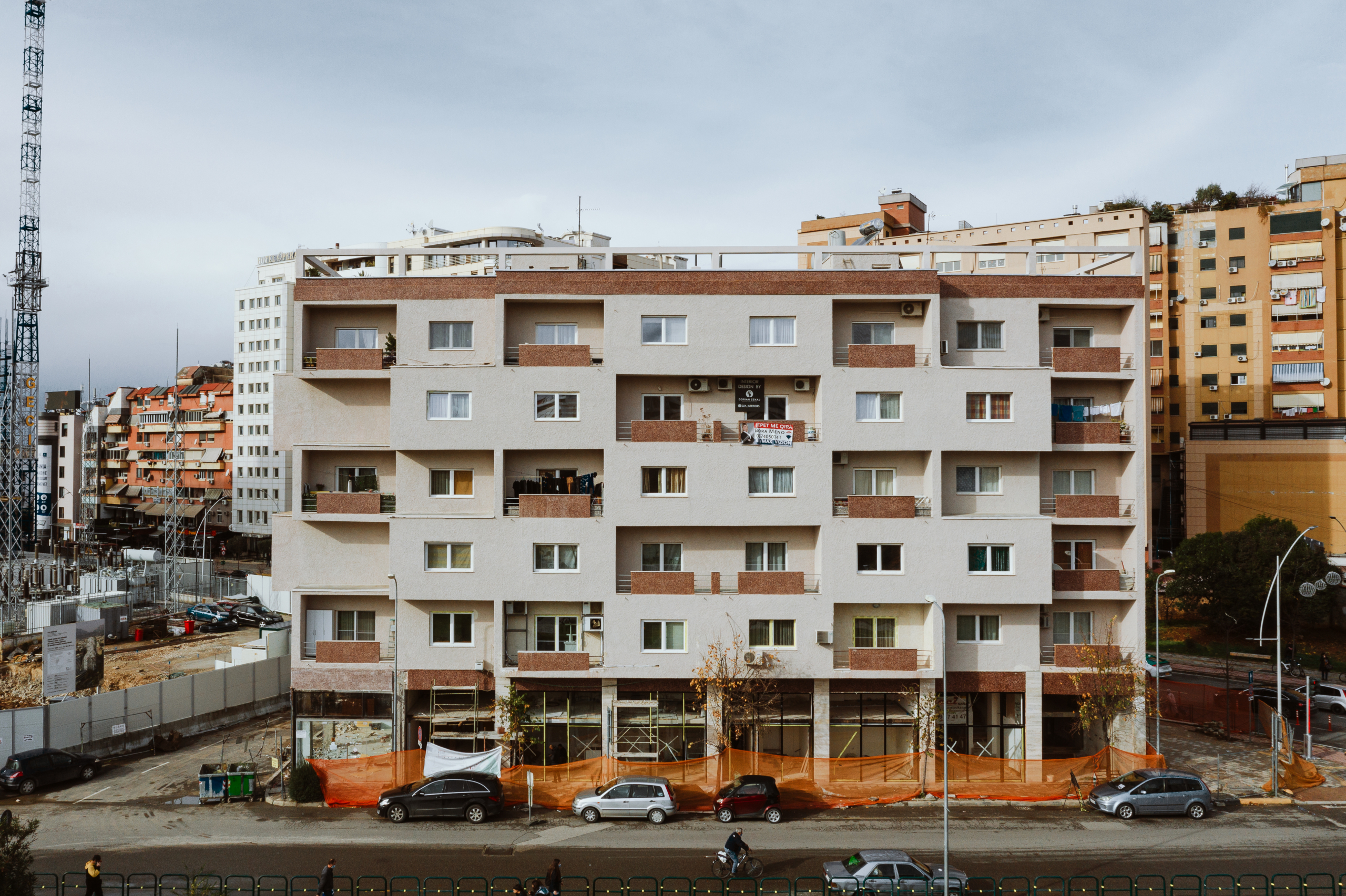Palace with Cubes
Details
Updated on December 24, 2024 at 9:31 amInformation
- Author: Maks Velo
- Year Built: 1972
Description
The “Palace with Cubes,” also known as “Studio Kadare and Agolli,” is an iconic architectural work in Tirana, Albania, built in 1972 by renowned architect Maks Velo. This building stands out not only for its unique architectural style but also for its cultural and historical significance, as it was home to some of Albania’s most celebrated intellectuals, including writers Ismail Kadare and Dritëro Agolli, and composer Feim Ibrahimi.
In an era dominated by the rigid socialist-realist style of architecture, the Palace with Cubes introduced modernist tendencies that were seen as revolutionary, even subversive, under the communist regime. Its bold design, characterized by an irregular arrangement of volumetric forms, playful interplay of light and shadow, and cubist-inspired geometry, set it apart as a daring architectural statement. This departure from conventional designs led to criticism from the authorities, who deemed it a “bourgeois-revisionist tendency,” a label used to suppress non-conformist artistic expressions. As a result, Maks Velo faced punishment, enduring imprisonment and exile. However, the building itself survived unaltered, standing as a rare testament to a period when creativity was stifled by political dogma.
The building’s aesthetic defies symmetry and traditional rules, with a dynamic composition of alternating volumes that emphasize its modernist and cubist character. It was criticized at the time for not adhering to the rigid formal standards of communist-era art and architecture, further cementing its reputation as an architectural anomaly.
Today, the Palace with Cubes hosts the Museum House of Ismail Kadare and the Museum House of Dritero Agolli, offering a glimpse into the life and works of the renowned Albanian writers. Visitors can explore the preserved interiors and learn about Kadare’s and Agolli’s literary contributions, as well as the cultural and political climate of the time.
On the east side of the building, a contemporary mural by graffiti artist Franko Dine further enriches its narrative. The mural depicts a library with numerous scores, seamlessly blending the building’s historic significance with modern artistic expression.
The Palace with Cubes stands as a powerful symbol of resilience and artistic freedom, a reminder of the courage it took to challenge conformity and create something extraordinary during a time of repression. Its enduring presence in Tirana’s urban landscape highlights its importance as both an architectural landmark and a cultural heritage site.








